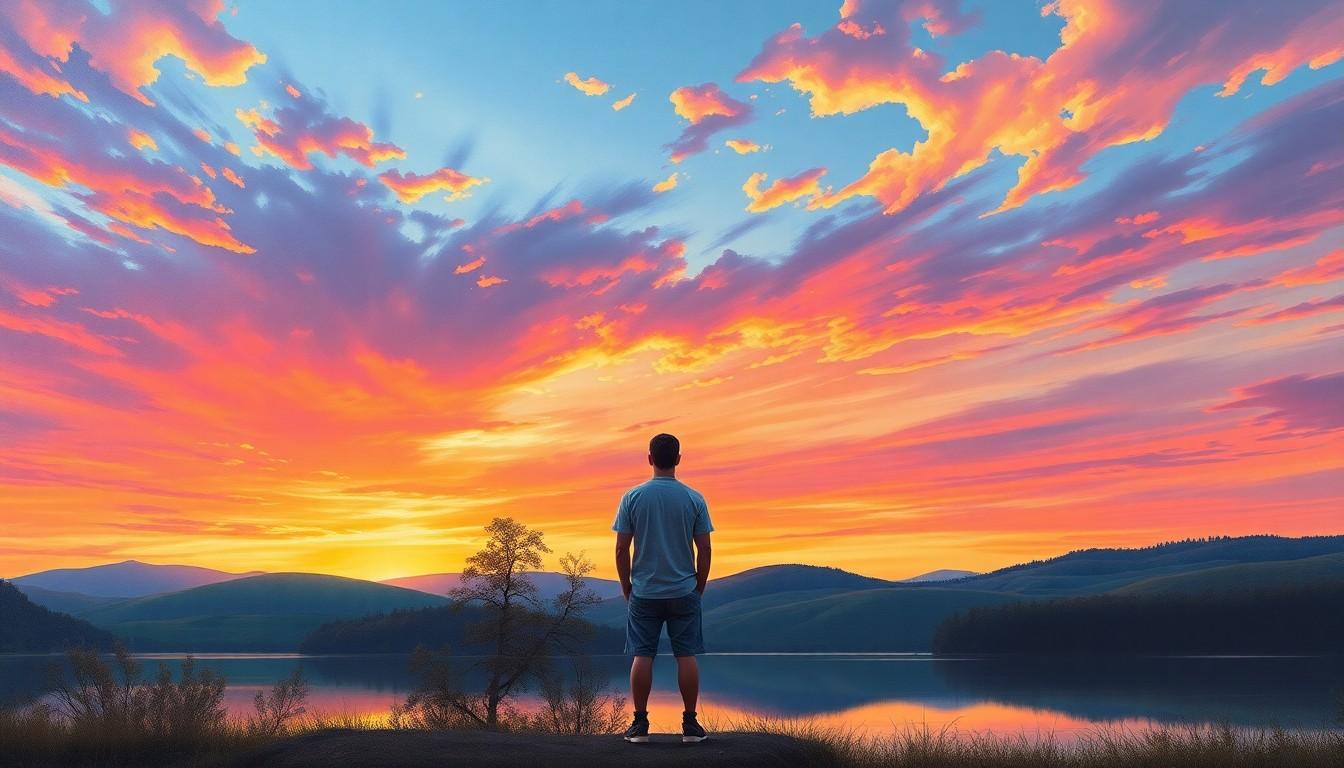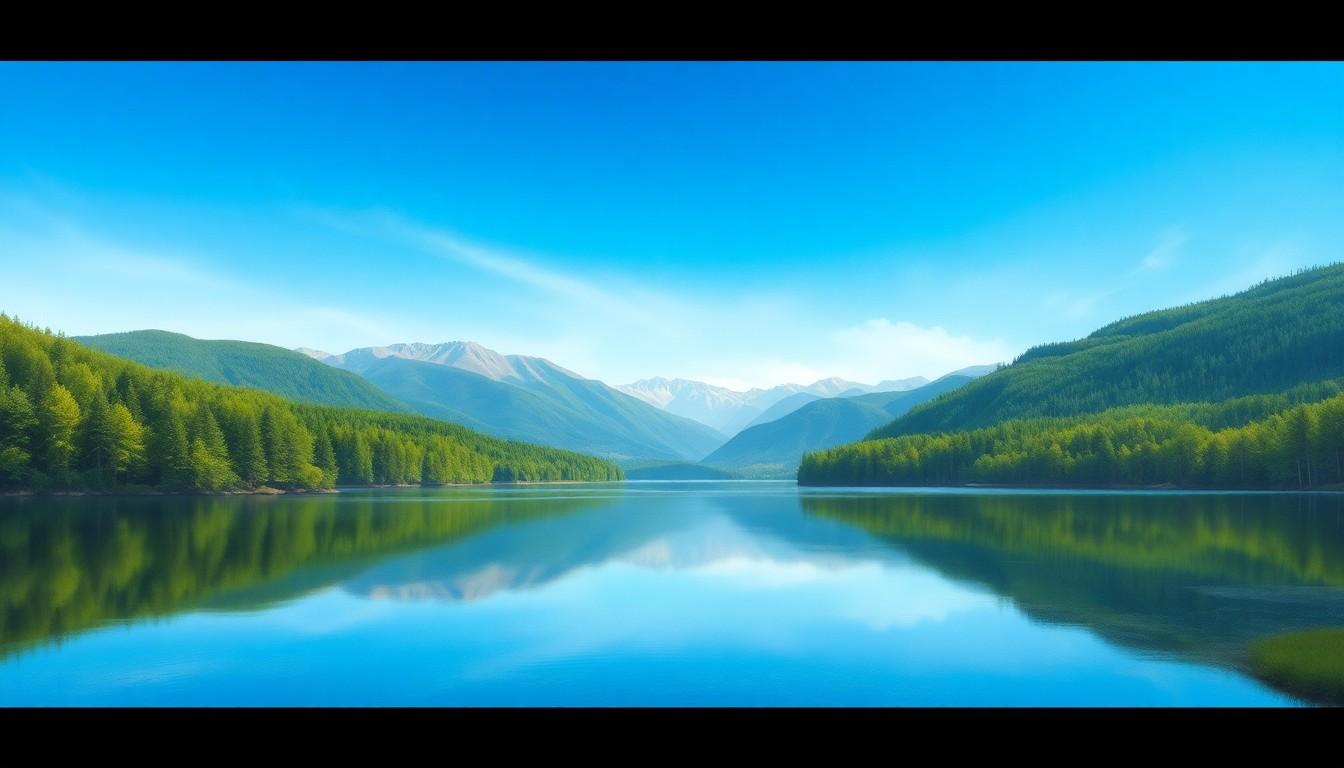Imagine stepping into a world where nature’s beauty becomes a canvas, and every brushstroke captures the essence of the great outdoors. Natural landscape art isn’t just a feast for the eyes; it’s a journey that transports viewers to serene mountains, tranquil lakes, and vibrant forests. It’s like taking a vacation without leaving your living room—who wouldn’t want that?
Natural Landscape Art
Natural landscape art serves as a profound expression of nature’s beauty. Artists capture diverse environments, such as mountains, lakes, forests, and deserts, showcasing the intricate details within each scene. Various mediums, including painting, photography, and sculpture, bring these landscapes to life.
Artworks often evoke emotions and transport viewers to serene settings, allowing for a mental and visual escape. Many artists draw inspiration directly from their surroundings, creating pieces that reflect the harmony between humanity and nature. The use of colors, textures, and forms highlights the essence of each landscape, revealing its unique character.
Exhibition spaces, such as galleries and outdoor installations, frequently feature natural landscape art. These spaces provide a platform for viewers to engage with the work, deepening their appreciation for both art and nature. Attending these exhibitions often leads to discussions about environmental conservation and the importance of preserving natural beauty.
Collectors and art enthusiasts value natural landscape art for its ability to create tranquil atmospheres. Homes and offices frequently display such artworks, enhancing interior spaces while promoting a sense of calm.
Natural landscape art captivates audiences through its vivid representation of the outdoors. It reflects the interconnectedness of art and nature, encouraging appreciation and respect for the environment.
Historical Development

Natural landscape art boasts a rich history that reflects humanity’s evolving relationship with nature. This section explores early influences and modern interpretations of the genre.
Early Influences
Ancient civilizations often depicted landscapes in their art, with Greek and Roman artists focusing on idealized views of nature. Renaissance painters like Leonardo da Vinci and Claude Lorrain transformed natural scenery into focal points in their works, emphasizing perspective and light. The picturesque movement in the 18th century further inspired artists to frame nature in aesthetically pleasing compositions that highlighted harmony and balance. Artists celebrated rural settings through detailed depictions of fields, rivers, and trees, romanticizing the landscape and capturing the sublime beauty of the natural world.
Modern Interpretations
Contemporary artists employ diverse mediums to capture landscapes, ranging from traditional painting to digital art and photography. Impressionists, such as Monet and van Gogh, painted landscapes with dynamic brushwork that conveyed movement and emotion. Minimalist artists embraced simplified forms, focusing on essential aspects of nature without added embellishment. Environmental artists raise awareness about ecological issues through installations that interact with the landscape, prompting viewers to consider nature’s fragility. Each modern interpretation adds depth to natural landscape art, reflecting artistic exploration and contemporary concerns while continuing to evoke emotional responses from audiences.
Techniques And Styles

Natural landscape art encompasses various techniques and styles that highlight the beauty of nature through diverse artistic expressions. Artists employ different methods to evoke emotions and create immersive experiences for viewers.
Traditional Methods
Traditional methods in landscape art revolve around classical techniques like oil painting, watercolor, and pencil drawing. Artists often rely on natural light to enhance their work, capturing the essence of landscapes in realistic ways. Impressionism played a pivotal role in developing these traditional techniques, emphasizing the play of light and color. Artists like Claude Monet exemplified this approach, using loose brushwork to depict natural scenes with softness. Engaging with nature directly, en plein air painting allows artists to experience their surroundings intimately, adding authenticity to the final piece. Historically, these methods laid the groundwork for modern interpretations of natural landscapes.
Contemporary Approaches
Contemporary approaches in natural landscape art incorporate innovative techniques such as digital art and mixed media. Artists use technology to create stunning visual representations of nature that often blur the line between reality and imagination. By experimenting with various materials, including photography, collage, and installation, practitioners can effectively convey messages about environmental issues. Minimalism prompts artists to simplify their work, focusing on essential elements that highlight nature’s beauty. Engaging the audience through interactive installations, contemporary artists invite viewers to experience landscapes in real-time. These approaches enrich the genre, reflecting modern society’s relationship with nature and promoting ecological awareness.
Impact On Culture And Society
Natural landscape art significantly influences culture and society, highlighting the intrinsic connection between humanity and nature. This genre fosters environmental awareness, encouraging audiences to reflect on ecological preservation.
Environmental Awareness
Artworks often depict fragile ecosystems, prompting discussions on climate change and habitat destruction. Artists frequently use their platforms to advocate for conservation efforts, enlightening viewers about environmental issues. Engaging with natural landscapes can lead to a greater appreciation of ecosystems, fostering a sense of responsibility toward the environment. Public exhibits and installations contribute to raising consciousness regarding biodiversity and the importance of sustainability.
Artistic Movements
Artistic movements within natural landscape art illustrate diverse approaches to depicting nature. Impressionism revolutionized the genre, emphasizing light and color in landscapes, as seen in the works of Claude Monet. Contemporary movements incorporate elements of minimalism and abstraction, allowing artists to explore the essence of landscapes more freely. These various styles reflect changing perceptions of nature and its role in society, encouraging ongoing dialogue about environmental concerns. Each movement contributes a unique perspective, enriching the cultural narrative surrounding natural landscapes.
Notable Artists In Natural Landscape Art
Natural landscape art features a diverse array of artists, from historical pioneers to contemporary innovators shaping the genre today.
Pioneers And Innovators
John Constable and his iconic landscapes transformed the art world by emphasizing natural light and movement. The British painter’s focus on realistic portrayals inspired countless others to explore the relationship between nature and human emotion. Additionally, Caspar David Friedrich’s mystical scenes encapsulated the Romantic era, showcasing sublime landscapes that evoke introspection. His works often highlighted humanity’s smallness against nature’s grandeur. Both artists paved the way for future developments in landscape art, influencing movements like Impressionism, which embraced new techniques and perspectives.
Emerging Talents
Today’s artists continue to redefine natural landscape art through innovative techniques. For instance, Julie Mehretu blends abstraction and landscape, creating dynamic compositions that reflect contemporary environmental challenges. Growing attention to climate change shapes her work, urging viewers to engage with ecological issues. Similarly, Olafur Eliasson’s installations use light and natural elements to immerse audiences in their surroundings. Many emerging talents incorporate technology and mixed media, bridging traditional aesthetics with modern concerns while fostering dialogue about nature’s preservation.
Enriches Cultural Narratives
Natural landscape art stands as a powerful testament to the beauty and fragility of nature. It invites viewers to experience the serenity of untouched environments while fostering a deeper connection to the world around them. Through various mediums and techniques, artists continue to explore and redefine this genre, bridging the gap between traditional aesthetics and contemporary issues.
As society faces growing environmental challenges, natural landscape art plays a crucial role in raising awareness and inspiring action. By celebrating nature’s splendor, it encourages individuals to reflect on their relationship with the environment and the importance of preservation. Ultimately, this art form not only enriches cultural narratives but also cultivates a sense of responsibility towards the natural world.

